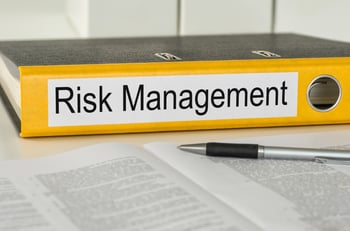 In terms of modern risk management in the U.S., it of course existed before the financial crisis in 2008, but many of us have gained a whole new perspective on insuring against risk when the crisis hit. Now that the economy is getting back on its feet, some professionals, especially small business owners, are starting to wonder if it's still worth the investment. This article is meant to answer that question and help you make the right decision on whether risk management training can benefit your company.
In terms of modern risk management in the U.S., it of course existed before the financial crisis in 2008, but many of us have gained a whole new perspective on insuring against risk when the crisis hit. Now that the economy is getting back on its feet, some professionals, especially small business owners, are starting to wonder if it's still worth the investment. This article is meant to answer that question and help you make the right decision on whether risk management training can benefit your company.
What Is Risk Management Training?
You already know the obvious answer to this question, of course, but we pose the question again to help you find a new perspective on this standard business practice. After all, the real question isn't why risk management training is important for your business, but why it’s still important. While large corporations can afford captives (i.e., financial war chests built on the profits of unrealized losses) to strategize and refocus risk management assessments, smaller businesses need to take a more proactive approach to insuring against the financial risks of specific projects and ventures. In fact, small businesses can utilize a scaled down version of captives, sometimes referred to as enterprise venture captives. This, too, is a worthy investment!
Until you can create a team dedicated to risk management or are otherwise able to pay for a third party to do it for you, you — as a business leader, owner, or project manager — need to understand how to evaluate risks, create solutions, and enact measures to track past risks as well as predict new ones. By having team members with this knowledge, you’ll be able to prioritize risk management and determine its impact across financial and public relations channels. (Yes, public relations can be imperative. With shifts in the consumer journey putting higher emphasis on social recommendations and reviews, PR can very much affect your bottom line, even as a small business.)
In effect, risk management training is the insurance to make sure that everyone on your team is doing their utmost to prevent and handle risks, and better ensure the success of a project as well as your business on the whole.
What Does Risk Management Training Offer Your Business?
How risk management training can save your business becomes more clear when you consider the fact that, if something causes a business to shut down operations for 10 days or more, the U.S. Bureau of Labor statistics says it's unlikely to survive. Risk management training means your company will have the tools (and the resources) it needs to rebound from a realized risk faster and more successfully.
More specifically, it allows you to:
-
Plan for future risks effectively — With the way risk management has been handled in the past seven years, it would be easy to fall into the trap of "fighting the last war." According to one survey, 86% of losses in the past decade can be attributed to strategic risk realization, yet auditors spent only 6% of their time evaluating strategic risks. It won't come as a surprise to find out that 91% of businesses plan to re-prioritize.
-
Identify liabilities more clearly — Risk management training gives you a way to build a risk management system, which in turn, makes nebulous risks real by putting them in black and white. You can identify them, discuss them, and determine their likelihood and impact.
-
Foresee/construct improvements — When applied correctly, identifying liabilities early on should also invariably lead to improvements and changes. By making risk management a part of your overall company, you turn potential risks into opportunities for improvement.
-
Develop repeatability and consistency — An effective risk management system is capable of recording all adverse events, helping you identify and predict risks in certain areas. Consistently repeatable data will not only mitigate risk by revealing potential blind spots, it will help to prevent risk realization altogether.
-
Permit objectivity — Through repeatability and consistency, you can determine objective, quantifiable results. This gives you an alternate perspective to more subjective measures and can increase the efficiency of your risk assessment process.
There's one other thing that risk training prepares you for, one which many people have forgotten in the wake of the financial crisis and are only now beginning to remember — actually taking risks. The true purpose of risk management shouldn't be relegated to merely risk prevention. Rather, effective risk management should identify opportunities and determine what level of risk is acceptable, allowing your business to take on those new opportunities.
Examples of Risk Your Business Could Face:
Security & Technology
Includes external breaches in information technology systems and storage, as well as theft of physical assets or information and intrusion of property. Also includes internal or externally caused technological failures from factors like computing glitches, corrupted drives, and server crashes.
Legal & Compliance
Includes external factors such as local, state, federal, and international laws, regulations, and policies. It can also include other obligational compliance best practices, procedures, and conduct, as defined by third parties.
Internal & Strategic
Includes intra-organizational, top-down value drivers such as mission statements, shareholder values, and organizationally defined compliance objectives, finances, and end goals.
Financial & Credit
Includes external factors such as borrowers failing to meet agreed terms, impacts on organizational portfolios, efficacy of key controls, and financial reporting statements.
Fraud
Includes internal and external factors such as ethical compliance standards and financial and operational reporting integrity, and typically includes areas of business such as procurement and accounting.
Project
Includes the internal factors of timelines, costs, and other project-specific considerations that impact implementation or delivery of the project. May also include partly external factors such as stakeholders and dependencies.
Customer
Includes external factors of specific accounts and customers, and their impacts on organizational social and financial standing due to their affiliations, credit standing, and other key factors.
Operational & External Market
Includes external events (politics, weather, etc.) and market shifts that impact exposure and performance. Also includes internal systems, processes, and people that have an inadequate or negative organizational impact.
Product & Supply Chain
Includes internal and external aspects encompassing product and service design from development, logistics, and market placement to use, and inevitable disposal.
No two businesses are the same, and risk management training will ensure you have the right tools to evaluate risk per your business' needs. Are you or your team ready for risk management training? Get started by learning more about PCC CLIMB's Risk Management course.




